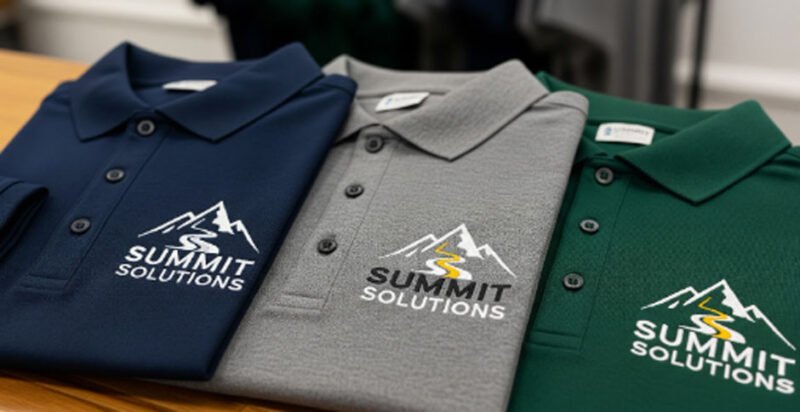Why a Unified Look Matters
An office with a uniform look may seem well organised and friendly. The atmosphere is more reassuring when visitors enter a setting where employees have a refined visual identity. Here, embroidered polo shirts with logo details help staff feel aligned with the wider mission while giving the brand a recognisable presence.
Choosing Fabrics That Support Daily Movement
The main focus of any active team should be on comfort when it comes to clothing choices. Light cotton mixes offer comfort, and smooth synthetic ones remain cool during extended working hours. Considerate balance between softness and durability promotes confidence and comfort even during chaotic work days.
Considering Fit for Different Body Types
A single cut rarely suits everyone. Well planned sizing ranges allow each individual to move freely without feeling restricted. Some people prefer a relaxed silhouette, whereas others enjoy a closer profile. By offering styles that honour varied proportions, employers support genuine inclusivity.
Encouraging Employee Feedback on Fit
Employees are normally aware of the shapes that assist them to work effectively. When they are invited to give their views, it will lead to garments that would satisfy real needs. Their comments may uncover neglected problems like the length of sleeves or the level of comfort at the neckline.
Adding Colour in a Strategic Way
Carefully selected shades can reinforce brand identity while still feeling pleasant to wear. Soft tones communicate calmness, while deeper hues project confidence. Visual harmony emerges when chosen colours connect naturally with the company’s message.
Balancing Bold Tones with Subtle Ones
Vibrant shades attract attention, yet too many bright elements can overwhelm the eye. Softer accents help maintain equilibrium and prevent visual strain. This combination keeps the clothing distinctive without becoming excessive.
Selecting Embroidery That Enhances the Garment
Embroidery creates a feel that the printed designs will never achieve. A well sewn emblem tends to portray care, precision and pride. When it is positioned intelligently, it can be a lasting indicator of quality.
Matching Thread Shades to Fabric
The thread tones used complement the base material producing a refined look. Strong contrast is used when visibility is the key, and similar shades are used when understatement is appropriate. Attentive choices in this domain boost the end output.
Prioritising Function as Much as Style
A clean aesthetic means little if the clothing does not withstand real conditions. Workplaces that involve movement, equipment or outdoor activity require pieces that resist wear. Reinforced collars, smooth seams and well structured materials ensure that the clothing stays tidy.
Considering Seasonal Conditions
Warm months call for airy fabric, while colder periods demand thicker layers. Adaptable wardrobes reflect environmental changes and help teams stay comfortable throughout the year. Thoughtful planning reduces discomfort and supports productivity.
Making Personalisation Meaningful
Names or role indicators can be incorporated with subtlety. This addition helps customers identify staff members quickly and encourages communication. When included with care, these details enhance approachability rather than distract from the overall look.
Creating a Collection That Grows with the Organisation
The brand remains unchanged as the teams grow with the help of a wardrobe that changes with the roles. New designs may be added to the previous works without disturbing the existing visual language. Treating clothing as a long term investment ensures that companies do not have to redesign unnecessarily and that continuity is maintained.
Bringing It All Together
There is much more to a cohesive team aesthetic than meets the eye. A clearly planned design, authentic comfort and responsible attitude to personal needs create garments that contribute to the morale and professional identity of employees. This makes embroidered workwear an effective means of enhancing the relationship between individuals and the organisation itself.








